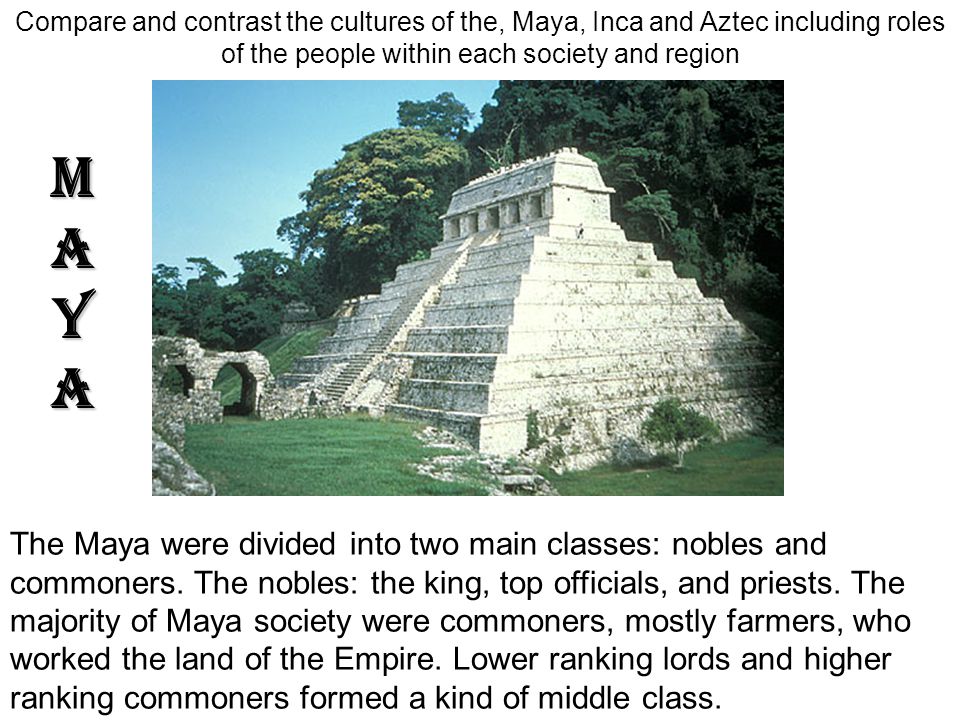The Aztec civilization and the Inca civilization were two of the most well-known and fascinating pre-Columbian empires of the Americas. The Aztecs were located in what is now Mexico, whilst the Incas were located in the Andean mountains of South America. The social structure of the Aztecs was hierarchical, but Inca society was organized in a more communal and egalitarian way. Both civilizations had complex religions that involved many gods, rituals, and sacrifices, and they developed many technological and scientific advances ahead of their time. Although both were eventually conquered by the Spanish conquistadors, their legacies still resonate today.
The Aztec civilization vs. the Inca civilization: Comparing Two Pre-Columbian Empires of the Americas
Introduction
The Aztecs and the Incas are two of the most well-known and fascinating pre-Columbian empires of the Americas. Even though they were located in different regions of the continent, they share some similarities and differences that are worth exploring.
Geography and Location
The Aztec civilization was located in what is now Mexico, in the central region of Mesoamerica. This area is characterized by a semi-arid climate, with fertile soils that allowed the Aztecs to develop their agriculture and trade. On the other hand, the Inca civilization was located in the Andean mountains of South America, comprising present-day Peru, Ecuador, Bolivia, and parts of Chile and Argentina. The Andes offered a diversity of climates, from the dry coastal deserts to the high-altitude plains and tropical forests.
Social Structure
The social structure of the Aztecs was hierarchical, with the emperor or tlatoani at the top, followed by the nobility, the priests, the merchants, the artisans, and the common people or macehualtin. The Aztecs had a complex system of tribute and taxation, with conquered peoples paying tribute to the central government in the form of goods or labor. In contrast, the Inca society was organized in a more communal and egalitarian way, with the ruler or Sapa Inca as the head of state, but also as a protector and provider for the people. The Incas had a system of mit’a, which was a form of mandatory public service for all men, including mining, farming, and military duties.
Religion and Beliefs
Both the Aztecs and the Incas had complex religions that involved many gods, rituals, and sacrifices. The Aztecs believed in a pantheon of gods related to nature, agriculture, war, and creation, and they practiced human sacrifice as a way to appease their deities. The Incas, on the other hand, worshiped the sun, the moon, and the earth, and believed in the divine origin of their rulers. They also had a tradition of child sacrifice, but it was less widespread than in the Aztec culture.
Technology and Advances
The Aztecs and the Incas developed many technological and scientific advances that were ahead of their time. The Aztecs were famous for their knowledge of engineering, astronomy, and medicine, as well as their elaborated writing system and their use of zero in mathematics. The Incas, in turn, were skilled in terracing, irrigation, and road building, which allowed them to develop a vast network of communication and trade. They also made significant contributions in the fields of metallurgy, textile weaving, and architecture, as seen in their impressive stone structures such as Machu Picchu.
Conquest and Legacy
Despite their achievements, both the Aztec and the Inca empires were eventually conquered by the Spanish conquistadors in the 16th century. The Aztecs fell to Hernán Cortés and his army in 1521, after a long and bloody war that devastated their society. The Incas succumbed to Francisco Pizarro and his small group of soldiers in 1533, after a complex web of alliances, civil wars, and epidemics weakened their empire. However, the legacies of these civilizations still resonate today, in the languages, arts, traditions, and the way of life of their descendants.
Conclusion
The Aztec civilization and the Inca civilization are two remarkable examples of pre-Columbian empires that thrived in the Americas. Although they were different in many aspects, they shared a vision of community, resilience, and creativity that distinguished them from many other societies of their time. By learning about their achievements and struggles, we can appreciate the diversity and richness of the human experience, and the importance of preserving the cultural heritage of our ancestors.
